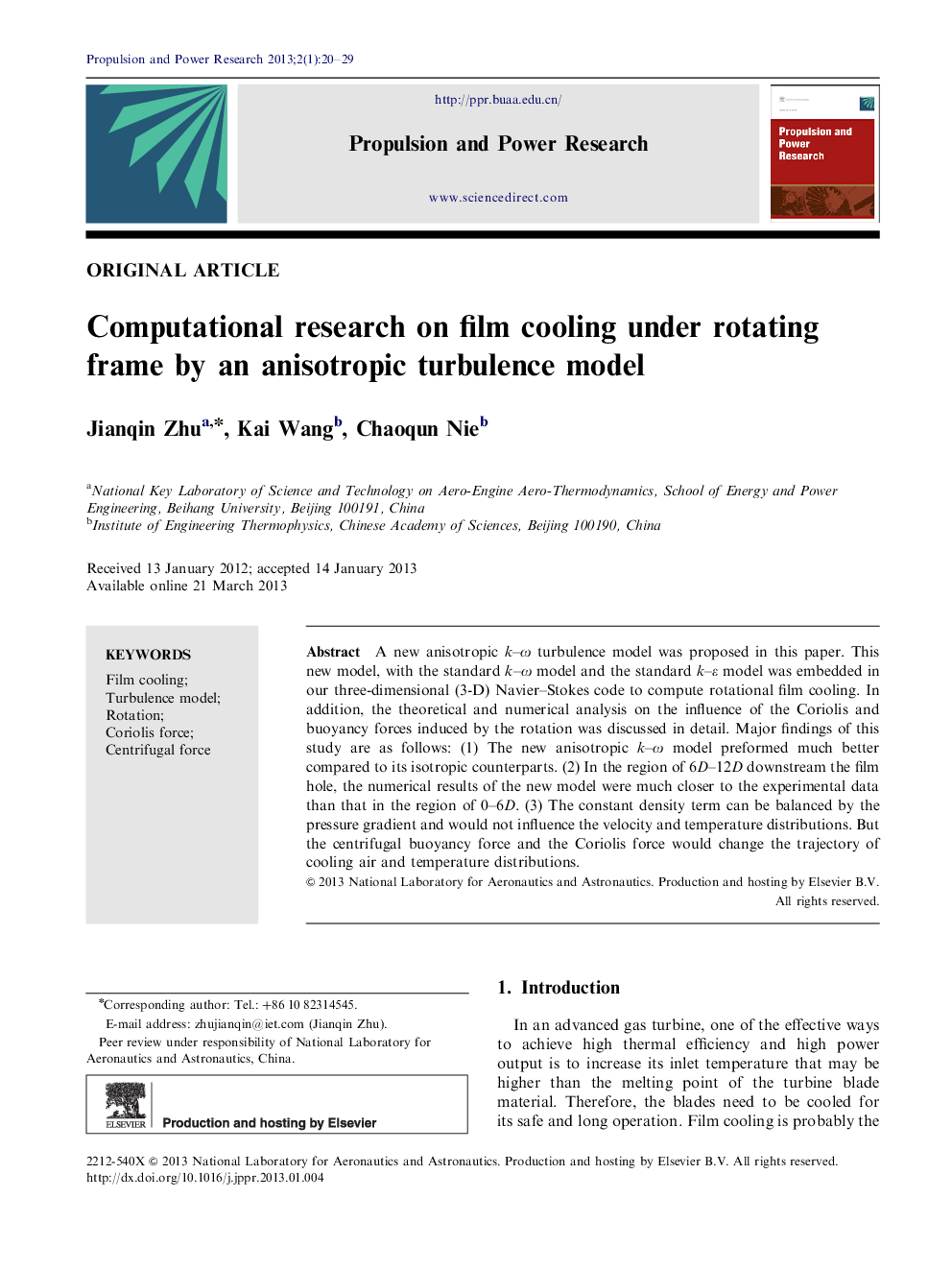| Article ID | Journal | Published Year | Pages | File Type |
|---|---|---|---|---|
| 1719712 | Propulsion and Power Research | 2013 | 10 Pages |
A new anisotropic k–ω turbulence model was proposed in this paper. This new model, with the standard k–ω model and the standard k–ε model was embedded in our three-dimensional (3-D) Navier–Stokes code to compute rotational film cooling. In addition, the theoretical and numerical analysis on the influence of the Coriolis and buoyancy forces induced by the rotation was discussed in detail. Major findings of this study are as follows: (1) The new anisotropic k–ω model preformed much better compared to its isotropic counterparts. (2) In the region of 6D–12D downstream the film hole, the numerical results of the new model were much closer to the experimental data than that in the region of 0–6D. (3) The constant density term can be balanced by the pressure gradient and would not influence the velocity and temperature distributions. But the centrifugal buoyancy force and the Coriolis force would change the trajectory of cooling air and temperature distributions.
